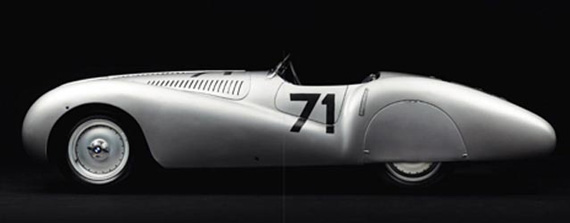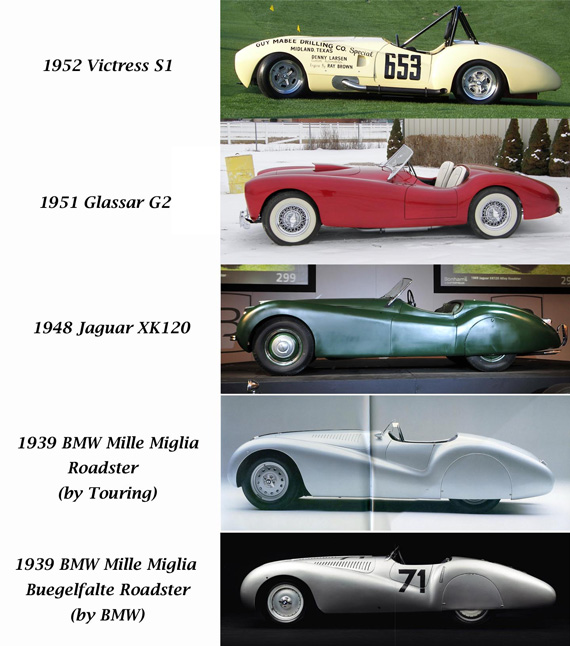This week we take you to Geoffrey Hacker’s site, Forgotten Fiberglass.com, to review an article we know many of or readers would find interesting. [Ed.]
By Geoffrey Hacker
Designs That Influenced The Styling Of The Victress S1 And Glasspar G2: The 1939/1940 BMW 328 Mille Miglia Roadster
What is the styling heritage of each of the vintage fiberglass cars we are familiar with?
I think this is an important question when trying to understand the place our cars occupy in history – not just in the manner in which they were built but also in the ways each of these cars were styled.
This was the question that Erich Schultz and I have been discussing recently, and the car we first began focusing on was the Glasspar G2 designed by Bill Tritt. Then we turned our attention to the Victress S1 designed by Doc Boyce-Smith and Hugh Jorgensen. Each of these cars owes their design heritage, in part, to the Jaguar XK120 – and another earlier car which I think you’ll find surprising.
So……let’s examine the Jaguar first: Click here to read Part 1
That story detailed the design influences of the Jaguar XK120 on both the Glasspar G2 and the Victress S1. The then, the story moves to the design of the 1939/1940 BMW 328 Mille Miglia and its influence on both of these cars which is Part 2.
The final story, Part 3 of this article, will focus on the 1939 BMW 328 Mille Miglia “Buegelfalte” Roadster – the first of the series of “BMW 328 Mille Miglia” Roadsters, and its even greater similarity to the Victress S1.



Looks like the Touring (Italian) bodied 1939 BMW Mille Miglia Roadster set the design for the Jaguar XK 120 and those that followed. And don’t forget it was a Touring bodied BMW coupe that won the 1940 local GP of Brescia stand-by for the Mille Miglia. I think Touring gets most of credit for this design series.
It is important to know a little bit more of the backround of the three BMW MM roadsters, because it would be wrong if Touring gets the reputation for this design. First, there is no question that Touring has done important designs for a lot of cars which had influence to others for decades.
But in this case it is different and the full credit for the design goes completely to BMW with designer Wilhelm Meyerhuber. The first one (Bügelfalte #85032) of the three cars was comletely built in the BMW facility in Munich and extensive tested in the winter period 1939/40. Only for time reasons, (The MM race was to close, to finish themselve) a member of the race department (Blasi Huber) brought the two second series cars (#85463, #85464) to Touring, where they helped to finish the two bodies in around 6 weeks, but to the design of Meyerhuber and not to a Touring one. Only the handwork was carried out at Touring, not the design!